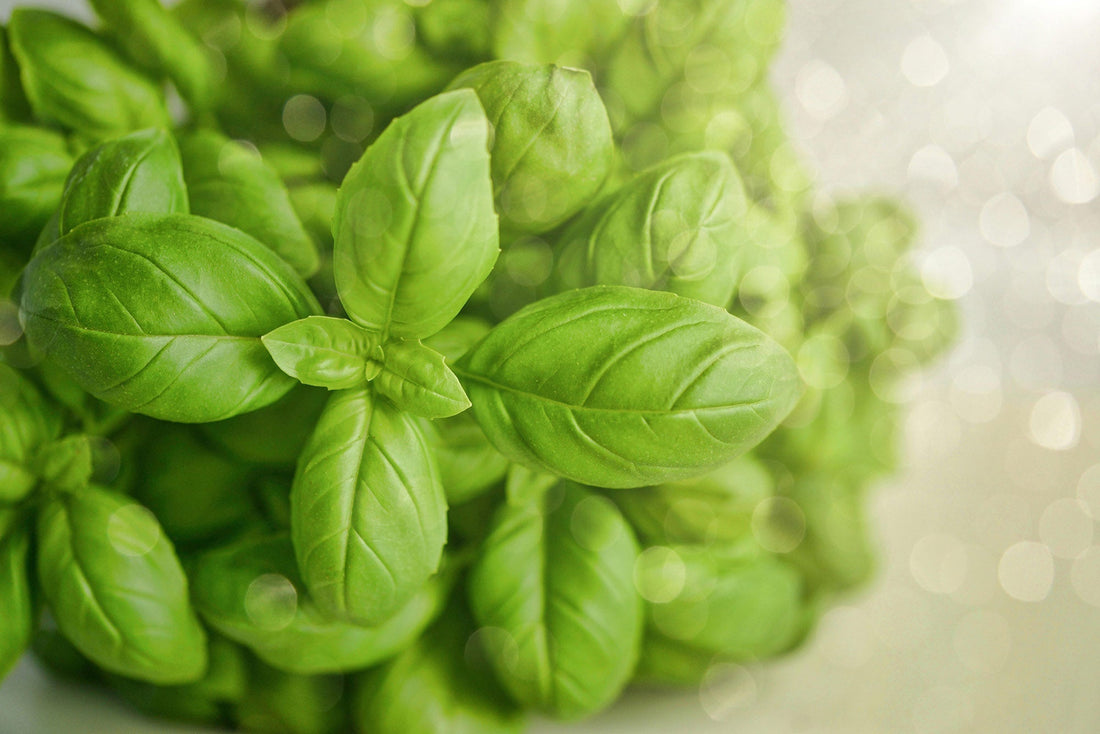
How to Grow Basil from Seed
Basil Genovese (Ocimum basilicum) is a popular variety of sweet basil, renowned for its aromatic leaves and rich flavour. As the cornerstone of pesto and a versatile addition to numerous dishes, it is a must-have for any herb garden. Though native to warmer climates, Basil Genovese can be successfully grown in the UK with the right care. This guide will take you through every step to ensure a thriving crop.
Introduction to Growing Basil from Seed
Basil Genovese is an annual herb with bright green, glossy leaves and a sweet, slightly peppery flavour. While it thrives in warm, sunny climates, it can be grown successfully in the UK either outdoors during the summer months or indoors year-round. It is particularly suited to containers, windowsills, and sheltered garden beds.
Choosing the Right Growing Conditions
Basil Genovese requires specific conditions to flourish, particularly in the UK’s variable climate.
Temperature: Basil prefers temperatures above 15°C and does not tolerate frost. It is best grown indoors or under cover in cooler regions.
Sunlight: Choose a location that receives full sun for at least 6-8 hours a day. A south-facing windowsill or a sunny garden spot is ideal.
Soil: Basil thrives in light, well-drained soil enriched with organic matter. For pots, use multipurpose compost mixed with perlite or sand for improved drainage.
Sowing and Planting Basil Genovese
Basil is easy to grow from seed, but you can also start with young plants.
Growing from Seed
When to Sow:
Indoors: Start seeds from February to April for early growth.
Outdoors: Sow seeds directly from May to June once the risk of frost has passed.
Indoor Sowing:
- Fill seed trays or small pots with moist compost.
- Sow seeds thinly on the surface and cover lightly with a thin layer of compost.
- Place in a warm location (18-25°C) with plenty of light, such as a windowsill or heated propagator.
- Water gently and keep the soil consistently moist but not waterlogged.
- Germination usually occurs within 7-14 days.
Outdoor Sowing:
- Prepare the soil by loosening it and adding compost.
- Sow seeds thinly, spacing them about 2 cm apart, and cover lightly with soil.
- Water gently and thin seedlings to 20-25 cm apart once they are large enough to handle.
Transplanting
Hardening Off:
- Gradually acclimatise indoor-grown seedlings to outdoor conditions by placing them outside during the day for a week.
- Transplant outdoors only after the last frost.
Spacing:
- Plant seedlings 20-30 cm apart in rows or clusters to allow good airflow.
Caring for Basil Genovese
Proper care ensures a continuous supply of fragrant, flavourful leaves.
Watering:
Keep the soil consistently moist but avoid waterlogging. Water at the base of the plant to prevent wetting the leaves, which can encourage disease.
In hot weather, water daily, especially for plants in containers.
Feeding:
Basil is not a heavy feeder but benefits from a liquid fertiliser every 2-3 weeks during the growing season. Use a balanced fertiliser or one designed for herbs.
Pruning and Pinching:
Regularly pinch off the tips of stems to encourage bushier growth and prevent the plant from becoming leggy.
Remove flower buds as soon as they appear, as flowering diverts energy away from leaf production and can make the leaves bitter.
Pests and Diseases
While generally hardy, Basil Genovese can face a few common issues:
Aphids:
These small pests cluster on leaves and stems, sucking sap and weakening the plant. Spray with a mild soapy water solution or introduce beneficial insects like ladybirds.
Slugs and Snails:
Protect young plants with copper tape, crushed eggshells, or organic slug pellets.
Powdery Mildew:
This fungal disease appears as a white coating on leaves. Ensure good airflow by spacing plants properly and avoid overhead watering.
Leaf Spot:
Caused by overwatering or poor drainage. Remove affected leaves and improve drainage to prevent further spread.
Harvesting Basil Genovese
Harvesting regularly keeps the plant productive and encourages fresh growth.
When to Harvest:
Begin harvesting leaves when the plant has at least 6-8 sets of true leaves, typically 6-8 weeks after sowing.
How to Harvest:
Use scissors or your fingers to pinch off leaves just above a leaf node (where leaves join the stem). This encourages new growth.
Harvest no more than one-third of the plant at a time to avoid stressing it.
Flowering:
If flowers appear, pinch them off immediately to maintain leaf quality.
Storing Basil Genovese
Fresh basil has the best flavour but can be preserved for later use:
Refrigeration:
Wrap stems in a damp paper towel and place them in a perforated bag in the fridge. Use within a week.
Freezing:
Chop leaves and freeze them in ice cube trays with a little water or olive oil for easy use in recipes.
Drying:
Drying is not ideal for basil, as it loses much of its flavour. Freezing is the better option for preserving its aroma and taste.
Growing Basil Genovese Indoors
Basil grows well indoors year-round, provided it has adequate light and warmth:
- Place pots on a sunny windowsill with at least 6 hours of direct sunlight daily. If natural light is insufficient, use grow lights.
- Keep the room temperature above 15°C, avoiding draughts and temperature fluctuations.
- Rotate pots regularly to ensure even growth.
Frequently Asked Questions
Q: Can Basil Genovese grow outdoors in the UK?
A: Yes, but only during the summer months when the risk of frost has passed. Choose a sunny, sheltered location.
Q: How can I make my basil more flavourful?
A: Ensure plenty of sunlight, consistent watering, and regular pruning. Removing flowers also helps maintain flavour.
Q: Why are my basil leaves turning yellow?
A: Yellow leaves may indicate overwatering, poor drainage, or nutrient deficiency. Adjust watering and consider applying a balanced liquid fertiliser.
Q: Can I propagate basil from cuttings?
A: Yes, basil propagates well from cuttings. Place a healthy stem cutting in water until roots develop, then plant it in soil.
Summary and Final Tips
Basil Genovese is a rewarding herb to grow, adding freshness and aroma to a variety of dishes. To summarise:
- Sow seeds indoors in early spring or directly outdoors in late spring.
- Provide plenty of sunlight, warm temperatures, and consistent watering.
- Harvest leaves regularly and pinch off flowers to encourage bushy growth.
- Protect plants from pests and ensure good airflow to prevent disease.
For further guidance, explore resources like the Royal Horticultural Society (RHS) website or herb gardening books such as Grow Your Own Herbs by Jekka McVicar. With proper care, Basil Genovese will thrive, offering an abundant supply of fragrant leaves for your culinary creations. Happy growing!
